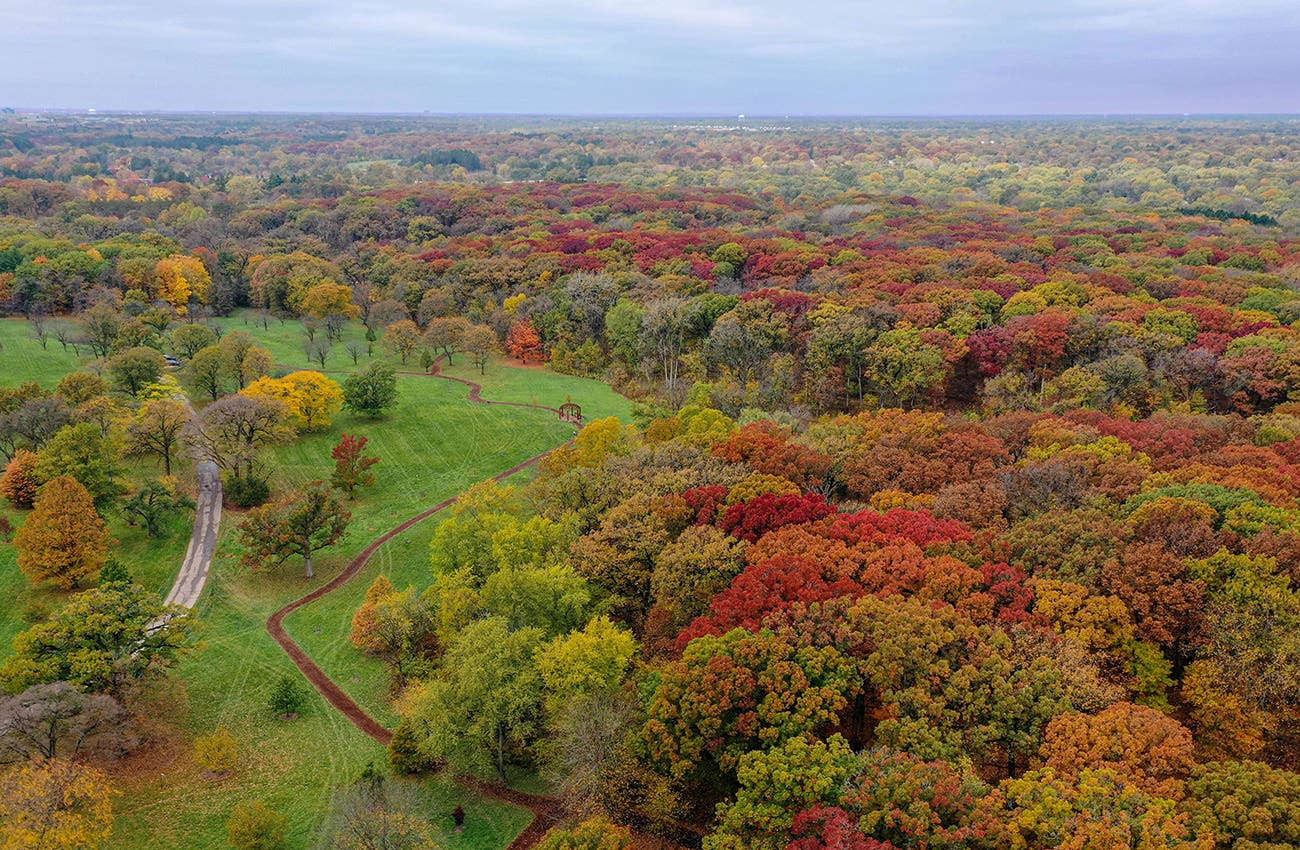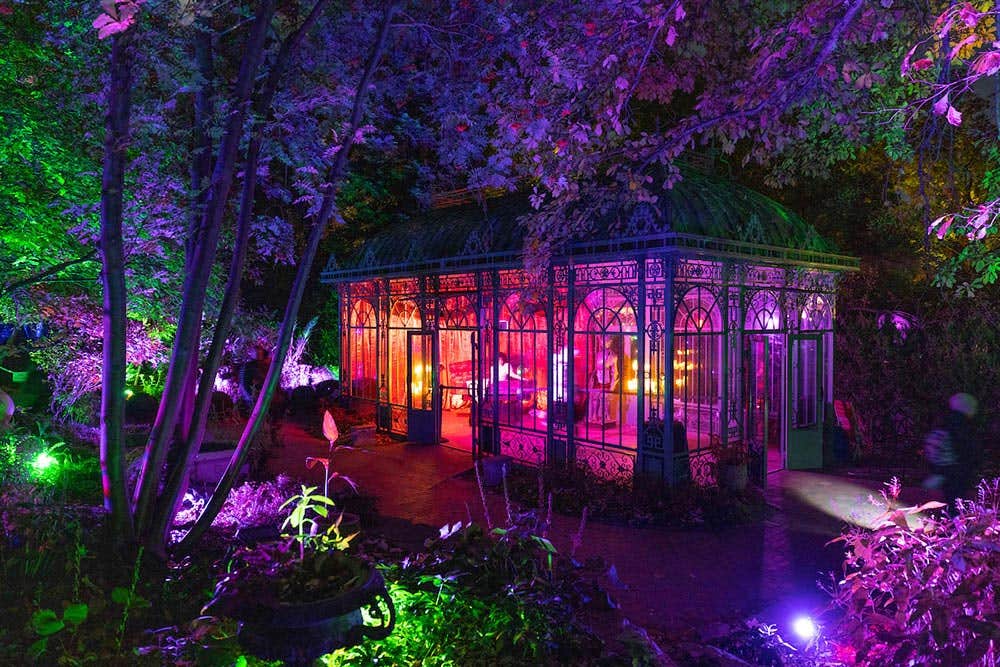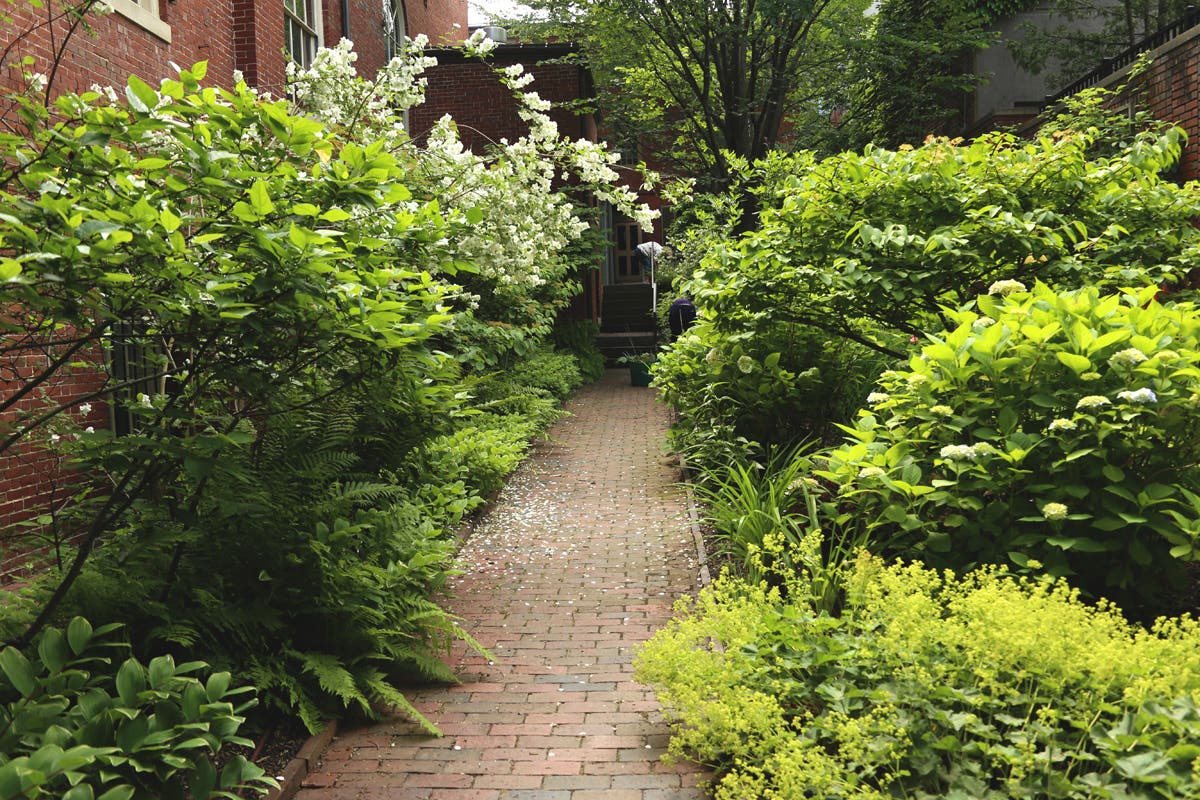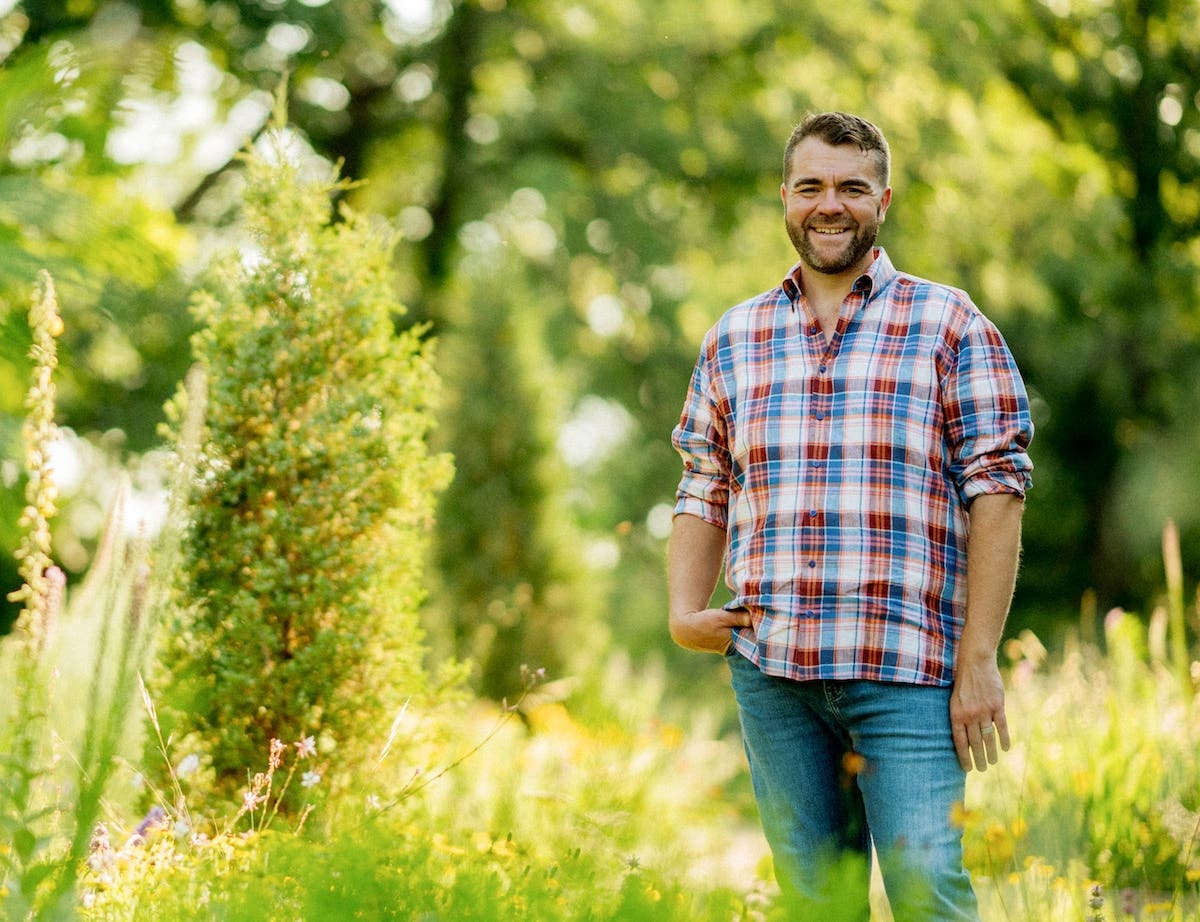Plan a Visit to Historic Longwood Gardens in Pennsylvania
Learn about the interesting story behind historic Longwood Gardens and all the exciting gardens they have to explore today.
The history behind Longwood Gardens
Long before you could walk the meticulously maintained pathways of Longwood Gardens, the hundreds of acres that make up this world-renowned institution about an hour outside of downtown Philadelphia was home to the native Lenni Lenape tribe. The Lenni Lenape inhabited a vast territory from northern Delaware to southern New York, but spear points found on and around the property of Longwood prove that the rich land was undoubtably utilized by the tribe.
Thousands of years of tradition and land tending ended when a Quaker farmer named George Peirce purchased 402 acres of the English-claimed land in 1700. George and his descendants cleared and farmed the land until 1798, when twin great-grandsons, Samuel and Joshua, began an arboretum that would eventually cover 15 acres. This was the birth of Peirce’s Park, which was a popular spot for family reunions and picnics in the mid-to-late 19th century.
As time wore on, heirs to the property lost interest in the arboretum, and the space became overgrown and unruly until a lumber mill operator was contracted to remove the trees in early 1906. This series of events spurred one man into action and marked the beginning of what would become the garden we know today. That man was Pierre S. du Pont, the American entrepreneur, businessman and philanthropist, who purchased the farm in July of 1906 and was the visionary behind many of the gardens and structures that still exist on the property. He got right to work rehabbing the land: The 600-foot-long Flower Garden Walk was completed in 1907, and he continued with additions and construction until the mid-1930s. When du Pont died in 1954, the private property was passed on to the trustees of the Longwood Foundation (his five nephews), and Longwood Gardens was finally opened to the public.
For more information on Longwood’s long history, visit their website.
________________________________________________________________________________
About Longwood Gardens:
- Location: 1001 Longwood Road, Kennett Square, Pennsylvania
- Size: More than 1,100 acres (200 acres open to the public)
- When to visit: The gardens are open year-round, just check their seasonal hours
________________________________________________________________________________
Come for the plants, but don’t miss the fountains at Longwood
Longwood consists of six districts, the most iconic potentially being the Main Fountain Garden. This is considered the focal point of Longwood, and the clearest representation of founder Pierre S. du Pont’s vision of the garden as grand theater.
The main fountains turn classic garden design into an over-the-top performance, while hand-pruned allées of littleleaf linden trees (Tilia cordata 'PNI 6025', Zones 3–7), expertly trimmed boxwood (Buxus spp. and cvs., Zones 4–9) hedges, and arches covered in frothy wisteria blooms (Wisteria frutescens 'Betty Matthews', Zones 4–8) transport you to the formal European gardens of France and Italy. And this likeness is no accident, as du Pont found inspiration for this project in the legendary gardens at the Palace of Versailles and Villa Gamberaia.
Along with the European-inspired Main Fountain Garden, the playful Topiary Garden, regal Rose Garden, and inspirational Idea Garden can all be enjoyed in this section of Longwood. To enjoy the water features in the Main Fountain Garden, and to experience the best that the other gardens in this district have to offer, plan to visit in summer or early autumn.
Related Article: Ecological Gardening Tips from Blithewold
Signature Plants to Spot at Longwood Gardens
Longwood, like any botanical garden, displays a vast collection of plants through the seasons, ranging from tropical orchids and annual blooms to captivating conifers, bonsai, native perennials and everything in between. However, here are six plants that are considered "signature" to the garden and its designs.
1. Blue poppies
Himalayan blue poppies (Meconopsis betonicifolia, Zones 3–7) are rare flowers that were once considered a myth. Native to the Himalayan Mountains in China, Nepal, Burma, Tibet, India and Myanmar, the plant naturally grows in remote areas and needs very specific conditions to thrive. At Longwood, they force a large display of the cultivar ‘Lingholm’ (Meconopsis ‘Lingholm’, Zones 3–7) to bloom every March. ‘Lingholm’ produces large flowers that are, on average, four inches in diameter. The bold blooms are a deep sky-blue color, with some slight variations because ‘Lingholm’ is a seed-derived cultivar. Longwood is one of the few places you can see these rare blooms in the Eastern United States, so March would be an excellent time to visit the garden if you’re looking to catch a glimpse of these blue beauties. Just be sure to check Longwood’s ‘What’s in Bloom’ page before planning your visit, as these plants have a notoriously short bloom period.
2. Cannas
Cannas (Canna x generalis, Zones 8–11) are a staple in many summer gardens, so it’s no surprise that they are utilized for color and height in Longwood’s borders during the summer months. However, these tropical plants hold a particularly special place at this institution, as the canna breeding program is one of the longest running research programs at Longwood. In 1967, unsatisfied with the current canna cultivars available, Longwood geneticist Dr. Robert Armstrong began the breeding program that would lead to 16 named cultivars produced between 1972 and 1985. The program was rebooted in 2008, and two more cultivars have since been released, including the most recent introduction: ‘Longwood Simply Salmon’.
Related Article: Visit Thuya Gardens in Maine
3. Chrysanthemums
Another common garden plant that gets an extra level of care and attention at Longwood is the chrysanthemum (Chrysanthemum spp. and cvs., Zones 5–9). Every fall, Longwood hosts their annual Chrysanthemum Festival, which showcases both common and rare varieties and grafting techniques that originated more than 400 years ago in Japan and China. This results in over-the-top displays that include mums painstakingly trained into single-stem plants, cascade forms, topiary forms in a range of shapes and sizes, and their Thousand Bloom Chrysanthemum that grows from a single stem and measures 12.5 feet wide.
To learn more about the intricate methods used to create these displays, check out this in-depth article on Longwood’s website: The Art of Grafting Chrysanthemums.
4. Blue Cineraria
Since the Longwood Conservatory opened in 1921, visitors could expect to see the vibrant blue blooms of ‘Cornflower Blue’ cineraria (Pericallis × hybrida, Zones 9–11) in their late winter/early spring displays. However, when suppliers stopped offering these cineraria seeds, Longwood became responsible for maintaining their own seed supply, and with each new generation of plants that followed, inbreeding depression resulted in reduced vigor. To keep the tradition of this plant alive at Longwood, two staff members traveled to the Canary Islands in 1995 to collect seeds of the native cineraria species (Pericallis papyracea). These native seeds were crossed with the ‘Cornflower Blue’ strain to stabilize the seed line and eventually produce plants with cobalt blue petals, increased plant height, and a large number of flowers per plant. These hybrid cineraria are now maintained in sterile tissue culture by Longwood researchers and can still be enjoyed in the garden every late winter through early spring.
5. Clivias
Another notable plant in Longwood’s late winter to early spring displays is clivia (Clivia miniata, Zones 9–11). Today you’ll see this member of the Amaryllis family sporting clusters of orange, yellow, red or sometimes green flowers, but that wasn’t always the case. When Longwood’s famed geneticist, Dr. Robert Armstrong, began breeding clivia in 1976, most plants available produced orange flowers. Yellow varieties were rare and often had small flowers and poor habits. As clivia take four to six years to first flower when grown from seed, this breeding program was no small undertaking. In the end, it took 35 years for the first official cultivar, ‘Longwood Debutante’ to make its debut at the 2011 North American Clivia Society’s International Symposium and Show. This buttery yellow variety has been followed up by ‘Longwood Fireworks’, ‘Longwood Sunrise’, ‘Longwood Chimes’ and ‘Longwood Sunset’ over the years.
To learn more about these cultivars and a green-flowered clivia that is still in development, check out: Clivia Breeding & Release.
6. Poinsettias
Like many botanical gardens that are open year-round in areas where winter brings below-freezing temperatures and snow, Longwood puts on an incredible light show in winter that also features some classic holiday plants, like the poinsettia (Euphorbia cvs., Zones 10–11). But similar to the chrysanthemum display in fall, these poinsettias are nothing like the one- and two-foot-tall plants you’ll see at the store. Longwood grows massive tree-form poinsettias that can reach up to seven feet tall and five feet wide. Huge, six- to eight-foot-wide hanging baskets are planted with ‘Annette Hegg Red’ poinsettia (Euphorbia pulcherrima ‘Annette Hegg Red’), and a small selection of standout cultivars are judged and scrutinized every year to secure their spot in next year’s display. If you think you’ve experienced poinsettias, visit Longwood during the winter and you might gain a new perspective.
Related Article: Christmas Mouse Poinsettia Is a Cute, Quirky Variety







